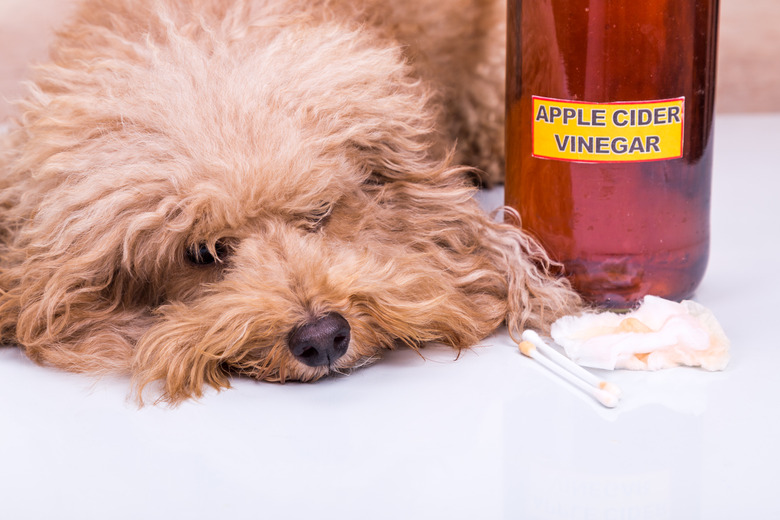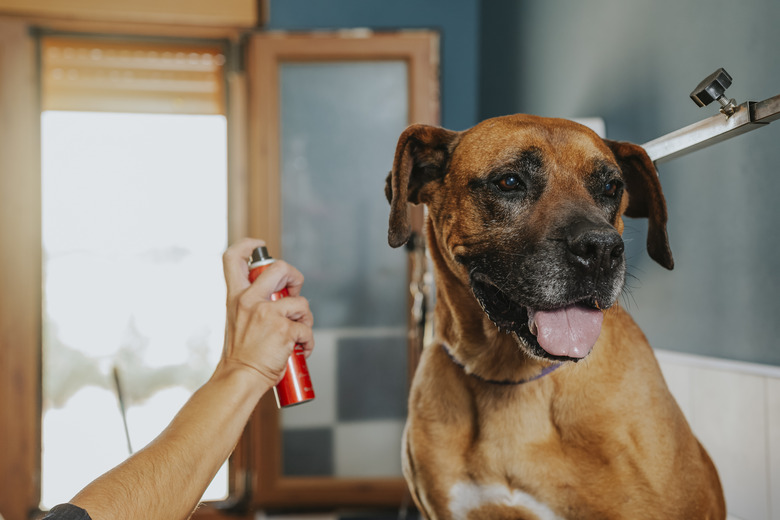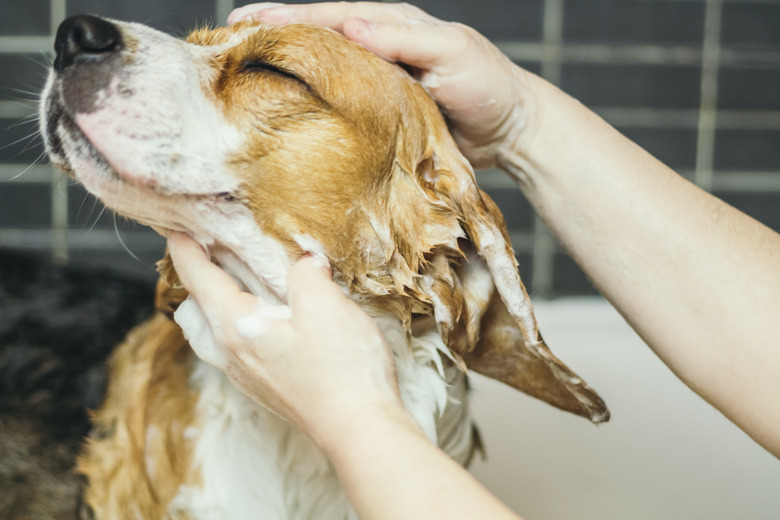How To Make A Dog Smell Good With Vinegar
That doggy smell can be one of the downsides of life with your furry companion. Regular bathing can help keep the smell down, especially when you make your own shampoo formula using white or apple cider vinegar. Learn to make vinegar spray for dogs that will leave your pet with a fresh fragrance and not a sour, vinegary odor.
Why vinegar helps
Why vinegar helps
Although vinegar can be caustic to your pet's skin and eyes, when you use it in diluted amounts, it can be beneficial to eliminating doggy odors, deterring pests, and helping to provide a healthy skin pH. It's important to avoid using human shampoo on your dog, as it's designed for the pH of human skin, which ranges from 5.5 to 5.6. Your dog's skin is much less acidic than human skin, with a pH of 6.2 to 7.4.
Vinegar's acidity ranges from 2.4 to 3.4, with apple cider vinegar at about 3.1. That means it's crucial to dilute the vinegar to a pH of 7 before using it on your dog's coat in order to avoid irritation. Using undiluted vinegar on your dog can change the skin's pH, setting up your pooch for skin irritation. It will also leave her smelling vinegary.
Wash your pet with a homemade shampoo spray made from three simple ingredients that include vinegar: warm water, white vinegar, and nontoxic dish soap. The vinegar deodorizes and adds shine to the coat, and the recipe, which follows in the next section, is tailored to the desired pH of 7.
Vinegar spray for dogs
Vinegar spray for dogs
To create a homemade vinegar spray, use a spray bottle to combine 2 cups of warm water, 1/2 cup of white vinegar, and 1/4 cup of nontoxic dish soap. Shake the spray bottle to mix the ingredients well. Take your dog to his bathing area and wet his coat with warm water. Spray the vinegar shampoo solution onto him, being careful to avoid his eyes.
The mixture produces a rich lather as you massage it into the coat. The dish soap helps the ingredients bind together; you can substitute liquid Castile soap for nontoxic dish soap if you prefer. Rinse your dog thoroughly, as the soap will cling to your dog's skin and fur. Make sure water runs completely clear to ensure all vinegar and soap are washed away with the dirt.
Alternatively, you can create a soothing shampoo for dogs with sensitive skin using a quart of water, 1 cup of apple cider vinegar, and a cup of baby shampoo (or nontoxic dish soap). Add 1/3 cup of glycerin and 2 tablespoons of aloe vera gel.
Add a fragrance
Add a fragrance
When diluted properly, using vinegar to wash your dog should leave her smelling fresh, not vinegary. You can add a drop or two of lavender or rosemary essential oil if you'd like a bit more lingering fragrance after bathtime. These essential oils will also help repel fleas, flies, and other pests that can annoy your pet.
It's important to add essential oils sparingly because they are only considered safe in very diluted amounts. Never use essential oils directly on your pet's skin or coat. Watch for signs of drooling or vomiting if you add essential oil to your pet's shampoo and contact your veterinarian immediately if you see any signs of illness.
When odor persists
When odor persists
If your pet still smells funky after bathing with a vinegar spray for dogs that is of the right pH, a trip to the vet is probably in order. There are many conditions that could cause your pet's odor to seem off or downright unpleasant.
Try to determine if the smell is coming from a particular area on your pet's body or if it is a generally bad smell. For example, an unpleasant smell around the head could be a sign of halitosis or dermatitis in the skin folds around the mouth. It could also be a sign of ear mites or ear infection, especially if your dog shakes his head frequently.
A persistent odor from your dog's tail region could mean impacted anal sacs. Anal sacs usually empty when your dog has a bowel movement. If the sacs don't drain properly, a thick fluid builds up, and the resulting discomfort will cause your dog to drag his anus across the carpet and seek other ways to relieve the pressure. Your veterinarian can teach you how to express the fluid as part of your dog's regular bathtime routine.
References
- American Kennel Club: Easy Homemade Dog Shampoo
- Clemson University: pH Values of Common Foods and Ingredients
- Washington State University College of Veterinary Medicine: Anal Sac Disease
- UC Davis Veterinary Medicine: Halitosis in Dogs
- Oklahoma State University: Essential Oils and Pets
- Washington State University: Examining and Medicating the Ears of a Dog


